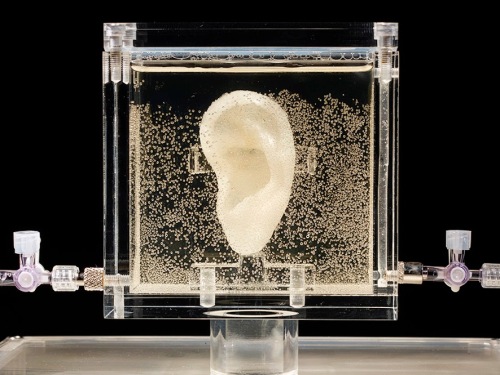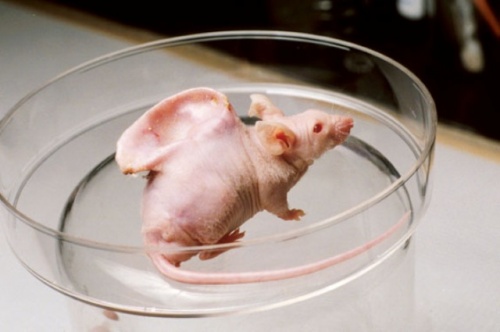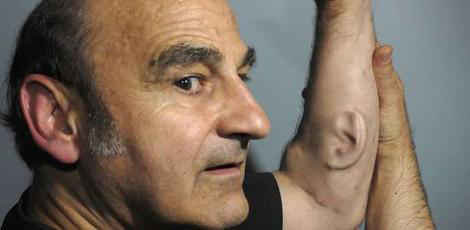Dutch artist Vincent van Gogh famously cut off his own ear. Now, another artist, Diemut Strebe, has made him a new one from tissue engineered cartilage. Strebe took genetic samples from Lieuwe van Gogh, a descendant of the artist’s brother Theo van Gogh, and created a new ear, titled Sugababe.
The harvested cells were grown onto a 3D printed scaffolding made to resemble the ear Van Gogh is to said to have cut off in 1888. The ear is displayed in a case containing a nutrient solution which could, in theory, last for years. Visitors to an exhibition in Germany last year could “talk to” the ear through a microphone which converted their voices into nerve impulses. (OK, sure, whatever. It can’t hear.)
Strebe is just the latest in a line of artists and scientists who have freaked people out by growing ears. The first were Robert Langer of MIT and Charles Vacanti of Harvard, who in 1995 succeeded in growing a pretty convincing-looking ear on the back of a mouse. Although the ear represented a huge advance in tissue engineering, the undeniable creepiness of the image worked against it. Critics pounced on the mouse as a sign of the imminent arrival of human-animal hybrids and a bustling trade in body parts, even taking out ads in the New York Times to denounce the new technology. In fact, the technique has mainly been used to help children born with missing or underdeveloped ears and people who have lost their ears to fire or trauma.
The most famous engineered ear in the world resides on the inner arm of performance artist Stelarc. His ongoing “Ear on Arm” project began in 2006, when surgeons inserted a “biocompatible scaffold” under the skin of his left arm. Since then he has undergone numerous procedures to upgrade it. In a 2012 interview with Wired, he noted “At present it’s only a relief of an ear. When the ear becomes a more 3-D structure we’ll reinsert the small microphone that connects to a wireless transmitter.” In any Wi-Fi hotspot, he said, it will become internet-enabled. “So if you’re in San Francisco and I’m in London, you’ll be able to listen in to what my ear is hearing, wherever you are and wherever I am.” (An update on Stelarc’s website indicates that the microphone was successfully inserted and used, but later caused a serious infection and had to be removed.)
Stelarc says his project “sees the body as an extended operational system,” a subject with obvious relevance in a world where we’re tethered to our smartphones day and night. Alas, his experiences with surgeries and infections indicate that, for most of us, keeping the tech on the outside of our bodies is a safer option. And the revulsion that has greeted all three of the artificially grown ear projects I’ve described indicates that society has no great longing to change that.
Filed under: The Art of Science Tagged: bioart, Diemut Strebe, Ear art, science art, Stelarc, Tissue engineering


